Phillip Harris - Permanent Rooftop Safety - PODCAST TRANSCRIPTION
May 31, 2023 at 6:00 a.m.Editor's note: The following is the transcript of a live interview with Phillip Harris of Tremco. You can read the interview below or listen to the podcast.
Speaker 1: Welcome to Roofing Road Trips with Heidi. Explore the roofing industry through the eyes of a long-term professional within the trade. Listen for insights, interviews, and exciting news in the roofing industry today.
Heidi J. Ellsworth: Hello and welcome to another Roofing Road Trips from RoofersCoffeeShop. My name is Heidi Ellsworth and I am here today with Phillip Harris with Tremco, a returning favorite to Roofing Road Trips. Phillip, it's so great to see you today. Welcome back.
Phillip A. Harris: I'm happy to be here. I'm always a pleasure talking with you, Heidi, and with RoofersCoffeeShop. So thank you always for having me.
Heidi J. Ellsworth: Oh my gosh. It's so great. And you know what? It's perfect because May is known as Safety Month. We have Safety Week, Stand Down for Safety. There's so much that's going on. You are the expert. So we wanted to bring you on and talk a little bit about permanent safety solutions and safety on the roof for not just insulation, but for the building owners long term. I'm super excited about that. Before we get started, why don't you go ahead and introduce yourself and tell us a little bit about Tremco and lead with safety from Tremco?
Phillip A. Harris: Will do. So Phillip Harris Jr. I am a product manager and a new business development manager at Tremco CPG. On the product management side, I'm over our Rooftop Safety Solutions. So Tremco is a building envelope is what we kind of try to call ourselves, like solutions providers. So we can provide everything from roofing with all type of different roofing membranes, from fluid applied systems to metal systems to single-ply, built up. We can also then address your facade. So we can pretty much touch every area of the building. So what we like to say is if you're looking to keep water and air out, that's what we can do. We keep the warm air in in the winter and we keep the cool air in in the summer. That is what we do.
Heidi J. Ellsworth: I love it. Along with a lot of safety along the way. So let's kind of go down that road. And before we get into what Tremco is doing, you've been so involved, Phillip, and you have so much experience. I'd love to talk about the importance of permanent rooftop safety products. In the past, I think in the roofing industry, we focus so much on the installation and safety, which is so important to get everyone home safe. But after the job is done, there's a lot of people still up on that roof and we need to have solutions to protect them also. How important is that and what do you see in the industry with the growth of that market?
Phillip A. Harris: So one of the big things we see back in 2017 is when OSHA made the change to a lot of the standards underneath general industry, underneath kind of 19.10, .28, .29, .30, where they made the change to make it line up a lot with that of the construction standards that we are all so much used to. It made it a little bit easier for building owners to understand their obligations to keeping the individuals who they employ and they send up to the rooftop. And with that, on our end, at Tremco, we made the decision to, as we continue to partner with our customers to say, "Hey, this is what we do to keep our team safe on the roof. Instead of us bringing all of this safety up, setting it up, temporary safety and then tearing it down, how about we start talking to you all about permanent safety? That could be left up, that not only can our team install it while they are working to be safe, but also as your team comes up on the roof, they could be safe too."
And with that, we developed a team of what we call SSRs or our Safety Solutions Representatives that go out and they team with our Tremco sales reps to go out and conform rooftop safety evaluations that could then show and pinpoint any and everything that needs to be addressed on that roof. They can put it into a report that is very similar to the reports all of our customers are used to getting and everybody's used to getting when we talk about the roof. It's the same type of analysis that can be put together for rooftop safety. And we break it down in that same approach that we love to do in Tremco where it's kind of our red, amber, green. Red is the immediate need, that amber is something that needs to be addressed but maybe you put it off until later. And then the green is the areas that with some different means of safety or with some education that would not need to be addressed.
So it allows the customer to build that same asset management plan for the rooftop safety as they're used to doing for any and everything when it comes to extending the life of that building and now also making it safe for everybody to work on. Right?
Heidi J. Ellsworth: Right, right. That's exactly what the building owners need. What are you hearing back from building owners about this?
Phillip A. Harris: A lot of times we hear some building owners really don't know what their team members are doing up on the roof. So the great thing that we like to do is not just talk to the building owner. The building owner is kind of the last step. That's the individual we want to present that report to to educate them on what's going on. But what we like to do is understand who's going on the roof. So we want to talk to the maintenance team, we want to talk to the EH&S team. We want to talk to the individuals that understand what's being done on the roof. So what we do is we put the analysis together in a way that's going to address safety, but address it best for that customer. Maybe they have multiple access points to get to the roof where we find out they're only really using one.
We can put into our assessment of putting some type of way to boat up or to lock out, lock and tag, the other access points that they don't want people to address. So they don't need any type of safety on those. They just need to lock those out. Then we can start talking about, "Okay, what are you doing when you're up on the roof? Okay, well then these are the areas that we need to make sure that we address immediately." Compared to certain areas where maybe they're sending up different trades people where they say, "Hey, no, we make sure that these individuals bring their own safety." "Okay, well where are your team members?" Right? Because as we know, Heidi, if something goes on in a building, people aren't waiting for individuals to come out when they have their own maintenance team on hand. Somebody's going to go up and do that initial analysis.
We also find that a lot of customers are still sending their maintenance team up to do certain roof cleanups, to go up and clean up the drains and do certain things. As we move into, unfortunately, the age we're in now, a lot of people have security cameras and stuff up there and where do they put them? They put all of that stuff at the immediate edge of the roof to hang over and be able to watch their property. So now you have individuals that are going up there cleaning lenses of cameras, changing out batteries or doing different things up there that we didn't do 20 or so years ago. As we get to understand it, we can put together that analysis, take it to the building owner, and now we also have input from their employees. They kind of say, "Hey, this is not something that we just came out and we're guessing. We've interviewed your team, we've talked to your team, we walked the roof with your team and this is what's being done on the roof."
Heidi J. Ellsworth: Yeah. That makes total sense. I love your approach of talking to people and finding out what it needs. I mean when you think about all the things that could be on the roof and now, like you said, security cameras, I'm thinking solar arrays. Those have to be cleaned. So you have different people up on the roof who you want to keep safe. That communication I think is key. So for some of the systems that you've already installed that are out there, what's some of the feedback from the facility managers once they have them in place?
Phillip A. Harris: The feedback we hear is they did not know it was that simple. And then they like the fact that it gives them ease of mind. That's one of our goals at Tremco is to give our customers ease of mind, and we offer the same exact service with these systems as we do with our roofing and other systems. Then we can also then sell a customer a maintenance package with it to say, "Hey, we'll come out, we'll make sure that that equipment that we put up on the roof is just as compliant two years, three years, four years from now as it was when we immediately installed it." We give them the same amount of support. They get their owner's manual. If it goes over, even if they don't want to purchase the maintenance from us, these are the things you need to do to keep that system compliant.
And also some maintenance you can do to extend its life, to make sure that system can be in place for years and years to come. Because we want to make sure that that building owner understands that this is the same as anything else that you have in your life. You have to maintenance it, you have to address it. We find that in the past, a lot of times people would put the safety up on the roof and then that was it, right? Nobody was going back making sure that all those nuts and bolts and everything was still tightened. The people didn't go up there and potentially tear down a part of the system as they were looking to fix something or address something on the roof. They got to then make sure you put it back up appropriately. Our call us to come back out are a trained certified person to come out and reinstall the system. We just found that just giving them that full education.
We are not looking to just place this system on your roof and leave. We want to make sure that the system, throughout its entire life cycle, will do what it was intended to do, which is keep individuals safe when they're walking and working from elevated heights and services.
Heidi J. Ellsworth: Exactly what they need. Exactly what we all need. So let's talk. I've been working with you guys for a long time. I love your culture and you have such a strong culture of safety. Can you kind of talk about that, the commitment to safety from Tremco, a little bit of the history and where you are today?
Phillip A. Harris: Yes. A quick snapshot of it. We really started to get pushed and continue... We've always said we lead with safety and that was an initiative that was started by our group president, Paul Hoogenboom, who really pushes and pushes us for safety making sure that... The model we like to use is that individuals get to leave how they showed up. We want an individual person shows up happy and healthy, we want them to leave the job happy and healthy. Then over time we continued to push our WTI team, Weatherproofing Technologies to continue to work safe. That's our contractor force that's tied into Tremco. And with that push, a decision was made to say, "Why are we only pushing and educating our team?" Let's continue to take that and educate our customers and then educate our sales team so our sales team could better understand it and not think of it in the mindset of this is something that is only for contractors.
So what a lot of our reps are now trained to do and are very comfortable doing now is explaining that to the customers. So when they're going to walk the roof to talk about the roof system, at the same time, they're going and they're also conducting a mini safety assessment as well. If the customer then shows interest, we could bring in our SSR with all the technology we have that a lot of us were pushed into because of the pandemic. While we do a lot of virtual assessments as well where we can get the address, the SSR can pretty much with a couple of inches, have somebody come out that's local to give them a little bit of data. They can pretty much do that full assessment from their office now.
Heidi J. Ellsworth: Wow.
Phillip A. Harris: So it's almost like 99.5% effective. It's just a few pieces of information we need as far as just seeing if the parapets we see of the walls are high enough to not require safety and some help locating some of the drains. Because from a satellite image, some of those drains can look like little dots. So we want to make sure it's not actually a drain, or is that something else? But for the most part, that could be done. So with it, safety is always on the mind of our sales team. So we consistently put it on the mind of the customer. So if our rep goes and they access the roof through a hatch, we kind of try to put a simple approach to it as we talk to customers saying at a minimum what we want to do is, number one, we want to look to address any type of roof access is, right? So that's just an immediate conversation.
Once we access the roof, our sales rep can look and explain to them, if we're coming out of a hatch, "Hey, I'm going to leave the hatch open. I'm sure your team normally does too." If that hatch is left open, OSHA considers that a halt. We have hatch guards that we can put on here, and a lot of times, Heidi, when we're also talking about doing a roofing project, a lot of times the labor on some of these systems can be minimized because we're already going to be up here for X amount of weeks or months, whatever it is to get this large roofing project completed. Pretty much the labor kind of knows out to do something as simple as address the hatch or put skylight guards over skylights. We can try to work in that number to really help because this is some stuff that we were going to have to do anyway. We were just going to have to do it in a way where it wasn't going to be permanent, it was going to be temporary.
That's what we like to do. Hose and openings. We then talk to them about that with skylights. And then we talk to them about unprotected edges, and then from there we talk about our catchall, which is just non-slip, right? Just things that make the roof safer. We kind of bucket it into those four areas. So it just helps with conversations with the customer to continue to educate them because we're already out there talking to them about whatever the need was that they called us for.
Heidi J. Ellsworth: Yeah, it makes so much sense because, like you said, you were going to put these safety precautions up anyway, maybe not exactly the same but very close. And why not do it? The building owner is actually saving money by doing it during the roof restoration. Okay. You've come out with a new TremSafe Metal Safety Solution. So I'd love to hear about that. Brand new.
Phillip A. Harris: Yes. Well, number one, we looked out, and I've talked to you in the past, Heidi, about our FRP, Fiberglass Reinforced Plastic System, and then we also saw the need to work and launch our own metal system so that way we can give our customers options. So we look at it where we have our FRP system, and that is our more premium technology. That's an offering that's going to come with a much longer warranty, but it's also going to come with a slightly higher price point. We then developed a metal line that is still non-penetrating. It has all of the similar systems to address those areas we talked about as far as the access points, the holes and the openings and the unprotected edges. But now we can do it with a warranty, but a slightly smaller warranty, and it's going to come at a slightly smaller price point.
We expect it to have a shorter life expectancy, but it's still a good life expectancy. I mean, we've been working with galvanized metal and steel for years. So that's the line. It's a galvanized metal line. The majority of the products can come in an option of colors. The standard color is either yellow or galvanized steel, but custom colors are available. And that's just something to continue to follow the Tremco path, which is presenting the facts to the customer and giving them options. Then we let the customer pick and choose from them. So we come out, we explain the need, we then almost, kind of like a restaurant, we kind of give you the menu. These are your different options that we can offer you to address that need, and we let the customer make the decision that's best for them.
Heidi J. Ellsworth: It's nice too because you never know where you're at as a building owner and how long you're going to own the building, what you're really looking for. When I think about your team, from your sales team to your SSRs, they really are sitting there with that building owner talking about budget, about goals, about those kind of safety planning. I know you talked about it already, but just how does that whole team come together to really take care of that building owner and understand both their budget and their goals?
Phillip A. Harris: That's an amazing question. So the number one thing is our reps, they're always pushing and we know just by human nature, we've pushed back when somebody asks us about our budget. We feel as if they're trying to question or they're asking too many questions. But the only goal from our sales team is to understand with the budget, let's see how we can then address it and then put together an asset management plan that you could then become fully compliant or whatever the need is. For this conversation, we're talking rooftop safety, so we can get you fully compliant in two years, three years, four years, five years. We work with very large customers on a national level. They may have thousands of roofs. There's no possible way with any type of budget, regardless of how successful a business is, that they're going to look to address every single roof at the same exact time across this whole platform of facilities.
So we may then work with them and work and do things like, "Okay, let's tackle 40, 50, 60, however many facilities we can each year." But the thing is that now they have a plan. So if any concern comes up, if anything ever happens from a safety type of compliance issue, they can show, "No, we're working to get our buildings addressed. This is our plan. It's a 10 year plan. It's a five year plan. It's a two year plan." But they have that paperwork with them to show that we already knew this was something and we're working to address it. We just have to do it in a way that is also financially responsive. So that's what they help to put together.
And then it also allows them to plan and then budget for it. They can understand now the need, the amount, and then we pretty much show them this is everything that you need. How can we go about doing it in a way that makes sense? And then as they give us that information, we can do it. We have one customer we work with that not only do we look at the budget, we also look at potentially let's work in certain areas in certain seasons so we can get more of these done, right?
Heidi J. Ellsworth: Oh yeah.
Phillip A. Harris: If they're in the northern part of the country, we can do those outside of the traditional roofing season so we can bring in more teams of people, keep them working, because as long as we're not dealing with snow or heavy rain, these systems can be installed. We're not worried about minimum and maximum temperatures that you typically have to think about when you're doing roofing systems. We also look at that to say we could do these systems here in normal times, and we can do those systems there. So we will try to work with the customer and put together whatever type of plan is necessary to not just work within the budget, but to also make sure that we can work and get their needs addressed and the speed that they need them addressed.
Heidi J. Ellsworth: That's excellent. I just think as we look at May and I look at what Tremco is doing every single day year round, to really bring safety to the forefront, this is the kind of stuff they need. That permanent safety structure on commercial buildings. I think it's going to be so important. So Phillip, how can contractors get involved? How can they find out more about both the metal safety and the fiber grade and just being involved with Tremco, what can they do?
Phillip A. Harris: Excellent question. So our SSR team and our reps, we also have what are called Contractor Support Specialists where we go out and we educate our contracting partners about all of our different solutions. We educate them on how to go about applying those roofing systems. We do the same thing on the safety. We also offer education to our contractor partners to show them exactly what our SSR team goes and looks at. So that way when they're going out and they're looking at buildings and they're putting together quotes, now they are also educating that customer on the need for safety and explaining to them, "These are the temporary things that we would install to do the project, but the company who we partner with also has these systems that we can install these and then these systems can stay." So we also educate our contractors on how to go about helping to promote and sell the systems.
So it also gives our contractors that same exact thing we talked about earlier. So we have certain contractors that are in the northern part of the country, like myself. Tremco is headquartered out of Beachwood, Ohio, which is a suburb of Cleveland, Ohio. So in the areas like that, we get heavy snow in certain times of the year. So those contractors also understand that they can keep their crews working outside of "roofing season" with that. So we also have contractors that have loved the idea what they will offer certain customers certain deals on the labor end to do these projects outside of traditional roofing season. So maybe the need comes up, but the contractor is saying, "During this time, we're packed. We have more work from what we can handle. But starting X, Y, Z month, we don't. So if you are able to push that project off for us, we could do it then. We'll be willing to discount our labor some because we want to keep our crews and teams working."
So we've also educated our contractors on the fact that these systems can be installed throughout the winter as long as the roof is safe to access and be on. So they love the idea of... Number one, they obviously as contractors understand safety. So they are familiar with it. They now are understanding how they can take that message to the building owner, and they're understanding how they can utilize these systems to keep their crews working year round rather than running them down south to work or running them out your way out west. They can just stay where they're at and keep doing projects and keep working.
Heidi J. Ellsworth: Yeah. So it really helps all the way around. And the more education that's out there, the more the contractors are talking to building owners, the safer everyone's going to be at the end of the day.
Phillip A. Harris: Correct.
Heidi J. Ellsworth: What I think about all the people who are up on that roof way after it's been roofed, there's a lot to protect right there. Phillip, thank you. Thank you for all you do. Thank you for these great products that you can continue to bring into the industry is so great. Any last words on safety or on what's coming up for the rest of the year?
Phillip A. Harris: Thank you so much. So last words, I want to make sure that when I talk about our metal line, that I don't just make it seem like the line is a shoot off of our FRP line and the only benefit is the cost. Also with this line, we've introduced a couple of very unique products where we have a guardrail system that we call it our TremSafe AS Series, and it's more of an architectural design so that the system itself is slowed. So if you set it back a little bit from the roof edge, it allows the roof to have safety, it's going to be compliant, it's going to keep individuals safe, but it could be more visually appealing. For individuals that want safety, but they also don't want, for lack of better words, the look of safety. They want to keep that aesthetic of the building to look how it was designed.
So one of the things we have that we're working to come out with, Heidi, is a line of what we're going to call our beautification line. So it's going to be systems that are safe, but also that are going to be appealing for architects and as well as the individuals that are over the aesthetics of the building. So it will be visually appealing or will not look like safety. It's going to look like maybe some type of design, some type of unique structure. So we're almost hiding the safety, almost encasing it and closing it. You'll just look up and if you're at X, Y, Z building facility and you look up, you just think, "Oh my God, look at this. They took and put some beautiful red structure on this facade, kind of reddish building."
So that's something that we're working on. We have the products, but we've never really marketed the products. We've just talked about it in conversation. So we want to make sure that architects understand that we have the systems that can allow them when they're putting together the design that they can design in safety and not worry about it being not visually appealing. That's some of the latest rub we've had is when we are talking safety and you have certain partners that we work with or customers that have facilities that have very high visual areas where they're looking at it saying, "This is great, but we just can't have this guardrail system right there. It just doesn't go with the look. We don't want our employees to see that." So now we can have an easy product guide or overview sheet to show these are all the products we have when you're looking to have safety. But the visual appeal is also very highly important.
We also have some systems in this metal line that can alleviate or eliminate the need for a guardrail. So that way if we have customers and maybe they have all of their equipment, and most of the work has to be done 15 feet or more away from the unprotected roof, which that's what we call at Tremco our green light area. We call it our TremSafe Rooftop Ladder Access System, but the system can go out 15 feet. So if a customer has a ladder as their access point, but no work has to be done within 15 feet, this system can pretty much almost look at it like a cattle rail can take the individual that accesses the ladder with guard railing on both sides with a self-closing gate all the way out to the area, and now we have warning lines telling them, stay back.
But within this area, you can work without needing that permanent fall protection, but now you can work within this visual warning here. So that's something that we have too within our metal line. So trying to think of all kind of ways that we could package and put together designs to customers that are going to meet the needs for each and every customers' unique needs or wants.
Heidi J. Ellsworth: Yeah, I think it's brilliant. I love the architectural safety. I know probably not everyone does this, but I tend to look up a lot and I love to see the architectural design at the top of buildings. So to work with that, I think that is going to be a game changer because the cities are architectural beauties. We want to have that look. And then to be able to have those different options from the ladder to the full system because everybody... I mean, I know we've said this multiple times now during this podcast, Phillip, but really everyone has different needs and different goals. So you really are providing a full breath of safety opportunities to fit whatever their needs are. It's great.
Phillip A. Harris: Thank you. That is the goal. We are here to educate and then be able to provide the solutions to help keep individuals safe. That's what we're looking to do, to have access to the roof for a living just like the rest of us. If possible, people would put nothing on the roof to work on, but we know we need them, right? Roofs are extremely important. People have to work on the roof, but we want to make sure the individuals on the roof can feel safe and feel as if that their needs and concerns are being met as well. It's kind of like what you said. Most people, by nature, we look straight, we don't look up.
Heidi J. Ellsworth: Look up. Look up. That's one of our campaigns. And also, as we think about it with all the technologies and how everything is changing and how people are really thinking about the rooftop more as acreage and ROI, there's only going to be more need to be up on the roof, whether that's cleaning the solar arrays or working on wind turbines or who knows what the next things are going to be. But I think the importance of what you're doing will only grow. Obviously, it's always been there, that need, but even more so now. I can't wait to see one of those first projects. I'm sure you already have a couple out there, so we're going to have to get some of those on RoofersCoffeeShop with that architectural safety. I think that's very cool.
Phillip A. Harris: We would love to get it out there.
Heidi J. Ellsworth: Yeah. Okay. Well, Phillip, thank you. Wow. This is a great addition to our May Safety Month, and I know you're safety year round as we all are. But thank you for really highlighting and spotlighting it this month. Appreciate your time so much, and I can't wait to have you back again.
Phillip A. Harris: Thank you so much. Can't wait to be back.
Heidi J. Ellsworth: Thank you. And thank you everyone for listening. Safety, safety, safety. We're going to be talking about it a lot. I'm thrilled to be able to bring experts like Phillip to really show all the great options that are out there, and you can see all of it on the Tremco directory on RoofersCoffeeShop. Great information, great articles, so check that out along with all of our podcasts under the read, list, and watch navigation under podcasts and Roofing Road Trips, or on your favorite podcast channel. Be sure to subscribe and set those notifications so you don't miss a single episode. We will be seeing you next time on Roofing Road Trips.
Speaker 1: Make sure to subscribe to our channel and leave a review. Thanks for listening. This has been Roofing Road Trips with Heidi from the RoofersCoffeeShop.com.
Recommended For You
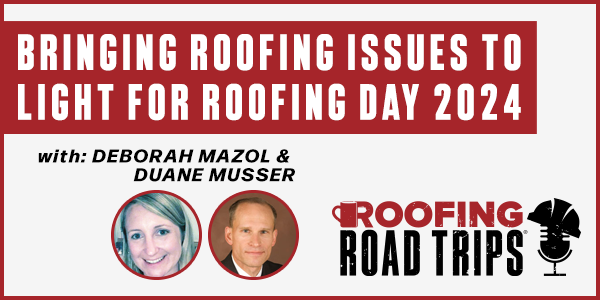
Deborah Mazol and Duane Musser - Bringing roofing issues to light for roofing day 2024 - PODCAST TRANSCRIPT
Read More ...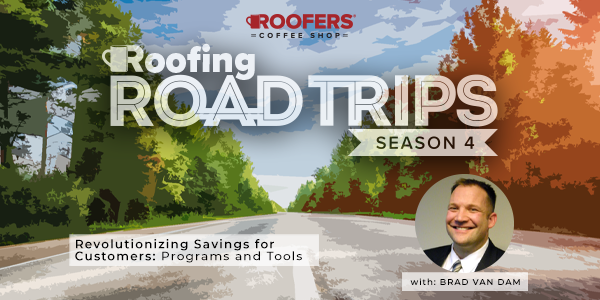
Brad Van Dam - Price Relief, Quick Shipping and Manufacturing Leadership - PODCAST TRANSCRIPTION
Read More ...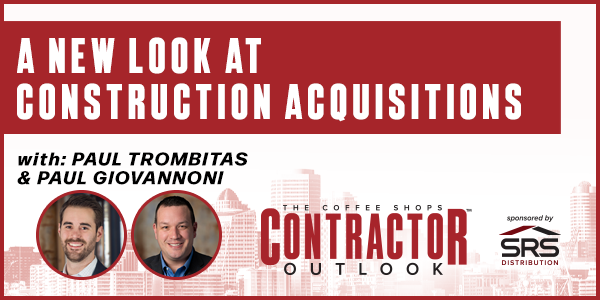
A New Look at Construction Acquisitions - PODCAST TRANSCRIPT
Read More ...

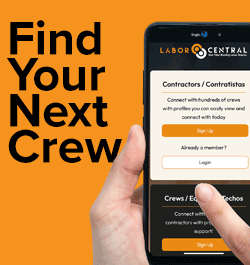

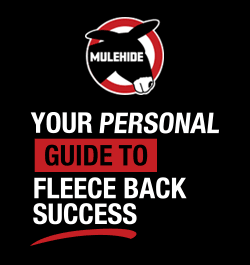




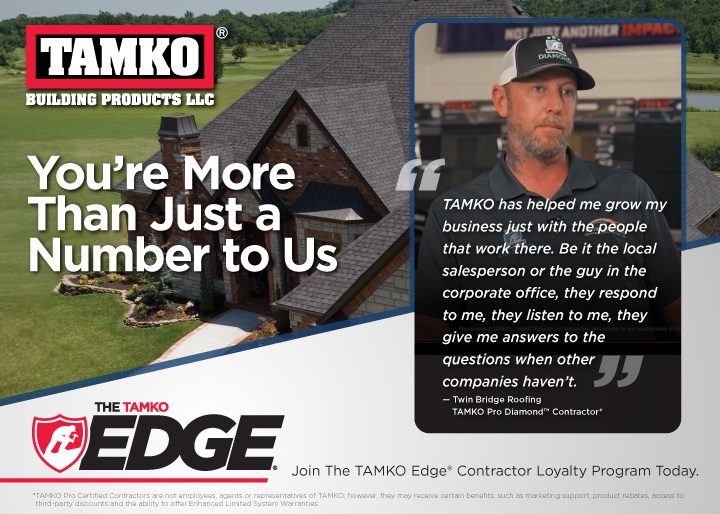



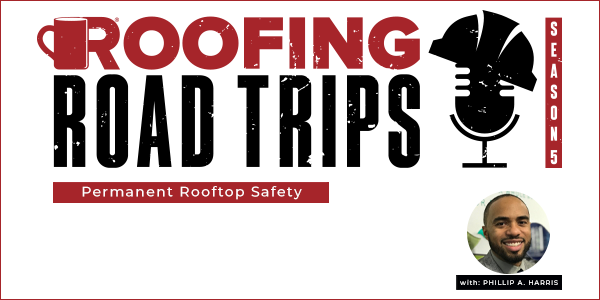

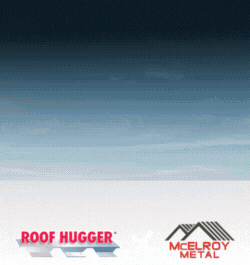
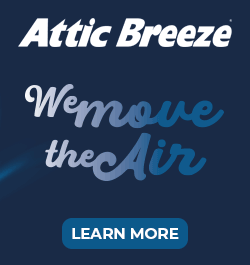
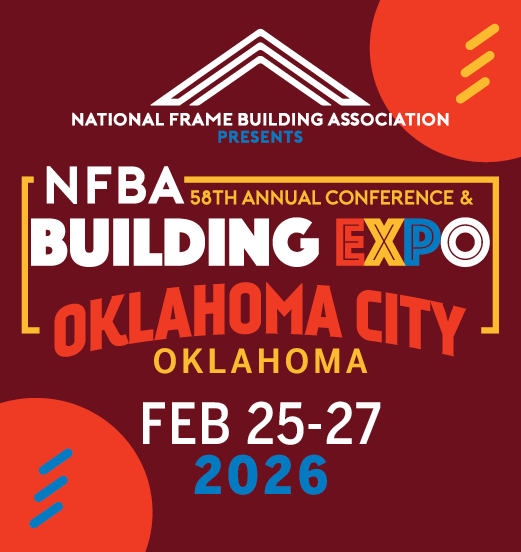

Comments
Leave a Reply
Have an account? Login to leave a comment!
Sign In